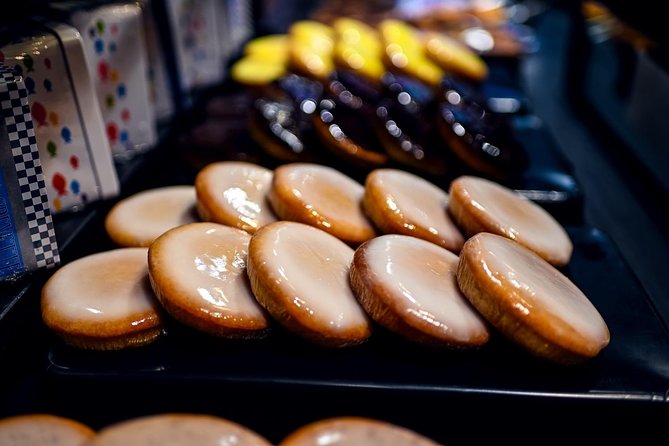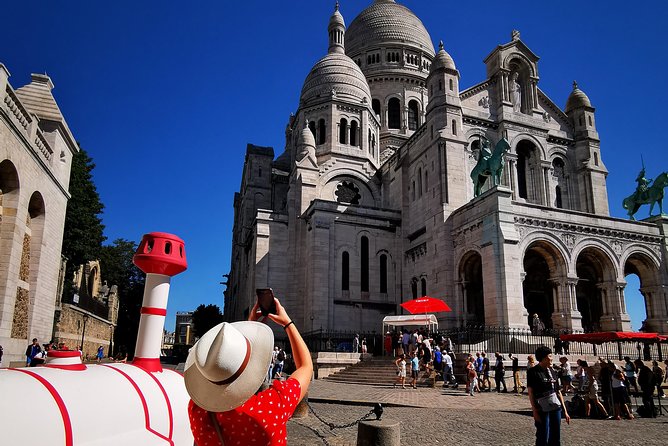The Musée du Louvre is undoubtedly one of the world’s most incredible art museums and a must-see attraction in Paris. Even if you don’t plan on exploring the museum’s interior, it’s worth visiting just to marvel at the sheer size of this former palace turned museum and to explore the free public access areas.
A Unique Entrance: The Louvre Pyramid
One of the most striking features of the Louvre is its main entrance, the Pyramide du Louvre. This glass pyramid, designed by architect I.M. Pei, was constructed nearly two decades before Apple’s iconic glass cube entrance to its Fifth Avenue store in Manhattan. To enter the museum, visitors descend a stairway from the Cour Napoléon at ground level to the main lobby, where they’ll find the reception area, ticket counters, and entrances to the various wings of the museum.
The Louvre is particularly stunning at night, when the glass pyramid and the surrounding buildings are illuminated, creating a magical atmosphere.
A Palace Steeped in History
The Louvre’s history dates back to the 12th century, when it was built as a defensive fortress. Over the centuries, it served as the palatial residence of French kings, with each successive ruler renovating or expanding the palace to suit their tastes and needs.
At one point, the Louvre’s quadrangle was enclosed by another royal residence, the 16th-century Tuileries Palace, which was demolished in 1872. Two of the palace’s most notable residents, Louis XIV (the Sun King) and his successor, Louis XV, were responsible for much of the Louvre as it appears today.
From Royal Residence to World-Renowned Museum
In 1791, the Musée du Louvre was established as a monument to the arts and sciences, and in 1793, it officially became a museum. With its seemingly endless corridors and large salons filled with priceless art, the Louvre can be overwhelming to navigate. The museum is divided into four levels and three wings (Sully, Denon, and Richelieu), making it a bit of a maze for first-time visitors.
To make the most of your visit, it’s essential to plan ahead and decide which artworks or sections of the museum you want to prioritize. A general tour of the Louvre’s highlights can take several hours, so be sure to review the museum floor plan before your visit. You can download a copy from the Louvre’s website or pick one up at the museum.
A Collection Like No Other
The Louvre boasts the largest and most comprehensive art collection in Western Europe, with an astounding number of pieces that will leave you in awe. Along With European art, the museum houses Oriental, Egyptian, Greek, Roman, and Etruscan Antiquities, as well as art from Africa, Asia, Oceania, and the Americas. The collection includes paintings, prints, drawings, sculptures, and objets d’art.
Must-See Masterpieces
Some of the art world’s most renowned works can be found at the Louvre, including:
- Mona Lisa by Leonardo da Vinci
- The Lacemaker by Johannes Vermeer
- The Cheat with the Ace of Diamonds by Georges de la Tour
- July 28: Liberty Leading the People by Eugène Delacroix
- Venus de Milo (Aphrodite), a statue dating to around 100 BC
- The Winged Victory of Samothrace, from about 190 BC
Please note that some paintings or objects may be undergoing restoration or on loan to another museum during your visit.
Sculpture at the Louvre
Along With the Venus de Milo and The Winged Victory of Samothrace, there are numerous other sculptural works throughout the Louvre. Sculpture enthusiasts should not miss the glass-topped Sculpture Gardens in the courtyards of the Richelieu wing, which offer a stunning display of artistry.
Exploring the Louvre’s Medieval Past
To discover the remains of the medieval fortress that once stood on the site of the Louvre, head to the lowest level of the Pavillon Sully, where you’ll find the Salle Basse (13th-century Lower Hall).
The Inverted Pyramid and Underground Shopping
On your way out of the museum, be sure to visit the Galerie du Carrousel du Louvre, a modern subterranean shopping center. The centerpiece of this area is the Pyramide Inversée, an inverted glass pyramid that serves as a skylight. This unique architectural feature may be familiar to fans of Dan Brown’s novel ‘The Da Vinci Code’.
Next to the inverted pyramid, you’ll find the first Apple store in Paris, which features another impressive glass structure above its entrance.
Getting There and Ticket Information
- Location: The Musée du Louvre is located on the right bank of the River Seine, at Place du Carrousel.
- Transportation: To reach the Louvre, take the Métro lines 1 or 7 to the Palais-Royal Musée du Louvre station. The Rivoli-Louvre station will also get you there, but the walk to the museum is longer.
- Ticket Prices:
- Adult Admission (Permanent Collection): €12.00. This ticket grants access to the museum’s permanent collection, which includes the most popular works that visitors come to see. It also allows entry to the permanent collection of the Musée Eugène Delacroix. Admission is free with the Paris Museum Pass.
- Additional fees apply for temporary exhibitions.
- Combined Ticket: €16.00. This ticket allows access to the permanent collections and temporary exhibitions in both the Louvre and the Musée Eugène Delacroix.
Tips for Visiting the Louvre
- To avoid long lines at the security checkpoint when entering through the pyramid, consider accessing the Louvre through the Galerie du Carrousel. Entrances to the Galerie can be found on either side of the Arc de Triomphe du Carrousel (opposite the traffic circle, in front of the Louvre) or directly via the tunnels of the Palais-Royal Musée du Louvre Métro station.
- Be aware that some sections of the museum may be closed for renovations, or certain pieces you want to see may be traveling to other museums.
- Wear comfortable shoes, as you’ll be doing a lot of walking through the museum’s vast galleries and corridors.
- Consider visiting during the evening hours on Wednesdays and Fridays, when the museum is open until 9:45 pm, to avoid peak daytime crowds.
- If you’re short on time or easily overwhelmed by large museums, focus on one or two wings or a specific collection that interests you most, rather than trying to see everything in one visit.
A Treasure Trove of Art and History
The Louvre is not just a museum; it’s a testament to the incredible artistic and historical legacy of France and the world at large. As you explore its halls and galleries, you’ll be transported through centuries of human creativity, from ancient civilizations to the masters of European art.
Whether you’re a seasoned art aficionado or simply appreciate beauty in all its forms, a visit to the Louvre is an unforgettable experience that will leave you in awe of the human capacity for artistic expression.
Beyond the Louvre: Exploring the Surrounding Area
After your visit to the museum, take some time to explore the surrounding area, which is rich in history and architectural beauty. Some nearby attractions include:
- Jardin des Tuileries: This beautiful public garden, located between the Louvre and Place de la Concorde, was once part of the Tuileries Palace grounds. Today, it’s a popular spot for picnics, relaxation, and people-watching.
- Palais-Royal: This former royal palace is now home to shops, restaurants, and the Comédie-Française theater. Its stunning gardens and courtyard, featuring Daniel Buren’s controversial art installation “Les Deux Plateaux,” are well worth a visit.
- Église Saint-Germain-l’Auxerrois: This beautiful Gothic church, located across from the Louvre’s eastern façade, has a rich history dating back to the 7th century. Its unique bell tower and intricately designed portal are particularly noteworthy.
By exploring the Louvre and its surroundings, you’ll gain a deeper appreciation for Paris’s incredible cultural heritage and the role that art and architecture have played in shaping the city’s identity.
The Musée du Louvre is more than just a museum; it’s a symbol of human achievement and a testament to the enduring power of art. As you wander through its halls and galleries, you’ll be struck by the sheer breadth and diversity of the collection, which spans millennia and crosses continents.
Whether you’re marveling at the enigmatic smile of the Mona Lisa, admiring the graceful lines of the Venus de Milo, or discovering lesser-known gems in the museum’s vast collection, a visit to the Louvre is an experience that will stay with you long after you’ve left its walls.
So, take your time, learn about the beauty and history that surrounds you, and let the Louvre work its magic on your heart and mind. You’ll come away with a newfound appreciation for the incredible artistic legacy of human civilization and a deeper understanding of why the Louvre remains one of the world’s most beloved and enduring cultural institutions.






